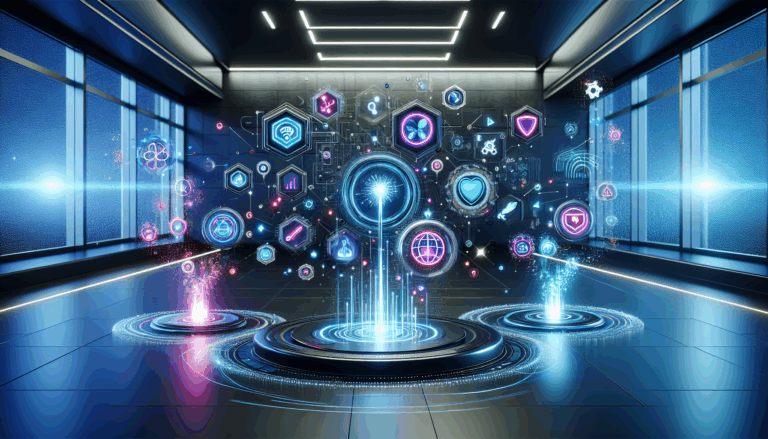Turning ChatGPT into a Personal Travel Planner
Imagine having an expert travel agent available to you 24/7—except it’s free and you never have to explain your preferences more than once. That’s what ChatGPT can accomplish as your personal travel planner! With just a few smart prompts, you can map out dream vacations or business trips, tailored precisely to your budget, interests, and schedule. Here’s how you can make the most of ChatGPT as your next-gen travel companion:
- Customized Itinerary Creation:
Start by giving ChatGPT the basics: your destination, duration, budget, travel style (adventure, relaxation, food-focused, etc.), and any must-see places or restrictions. For example, ask: “Plan me a 5-day itinerary in Kyoto focused on traditional cuisine and hidden temples.” ChatGPT can quickly generate a feasible day-to-day schedule, complete with transportation advice and local tips. For inspiration on trip planning essentials, check out this guide from Lonely Planet.
- Real-Time Local Recommendations:
If you’re already on the road, ChatGPT can help you discover local experiences—from recommending hidden restaurants to off-the-beaten-path attractions, or even alerting you to weather changes and adjusting your plans accordingly. Just input your location and what you’re in the mood for, and ChatGPT will sift through up-to-date information (with added support from actual location-based services).
- Comparing Flights and Accommodations:
While ChatGPT can’t directly book your ticket, it can help you understand how to find the best flight deals by walking you through comparison strategies—like flexible date searching, alternate airports, and loyalty rewards. It can also recommend trustworthy hotel booking websites or even suggest alternatives like hostels and vacation rentals. Learn more about the science of travel searching with this resource from MIT.
- Budget Planning Made Easy:
Feed ChatGPT your overall budget, and it can break down estimated costs for flights, lodging, dining, transportation, and activities. It can offer tips on where to save (like embracing street food markets) and warn you about potential hidden fees abroad. The Budget Your Trip website offers further insight into average trip costs by destination.
- Cultural and Safety Guidance:
Worried about customs, tipping etiquette, or travel advisories? ChatGPT can summarize key facts from reliable sources like the U.S. State Department Travel Advisories, so you’re always prepared and respectful wherever you go.
By leveraging these features, ChatGPT transitions from a simple search tool into a highly adaptive, personalized travel planning service. Try it for yourself and transform how you explore the world—one smart conversation at a time.
Writing Code in Seconds: The Developer’s Shortcut
Imagine a tool that lets you generate functional code snippets, debug errors, and even optimize your codebase—all within seconds. ChatGPT has revolutionized the way developers approach programming by offering real-time assistance that feels almost like having a coding partner available 24/7.
With natural-language prompts, you can ask ChatGPT to write entire functions or scripts in popular languages such as Python, JavaScript, or Java. For example, if you prompt, “Write a Python function to reverse a linked list,” ChatGPT will instantly produce a ready-to-use code block. This approach significantly reduces the time spent on boilerplate code, letting developers focus on higher-level challenges.
Debugging is another area where ChatGPT shines. Stuck on a persistent syntax error or logical bug? Paste your code and describe the issue. Within moments, you’ll often receive a clear explanation of what’s wrong, paired with a corrected version of the code. This feature proves invaluable for beginners learning the ropes, as well as seasoned developers eager to streamline their workflow.
- Rapid Prototyping: Say you’re designing a REST API endpoint but aren’t quite sure how to structure the request handlers. Ask ChatGPT, and you’ll receive a framework-specific template, such as for Flask or Express.js. This can supercharge project kickoffs and MVP construction.
- Automated Code Translation: Need to convert logic from one programming language to another? ChatGPT makes this headache-free. For instance, request a JavaScript version of an existing Python algorithm—ChatGPT will deliver, saving hours of manual rewriting.
- Learning New Frameworks: Exploring unfamiliar frameworks or libraries can be daunting. Just ask ChatGPT for a sample project or typical use case, and receive annotated code alongside concise explanations. Supplement this with documentation from established sites like MDN Web Docs and you’ll be building confidently in no time.
According to Nature, tools similar to ChatGPT have dramatically improved the productivity of developers, particularly in generating code snippets and documentation. By combining the speed of AI-driven code generation with the vast repositories of knowledge found on the internet, developers now possess an unprecedented shortcut to software development.
So whether you’re tackling a thorny algorithm, seeking to automate mundane tasks, or trying out a new tech stack, ChatGPT offers a developer’s shortcut for writing, troubleshooting, and optimizing code—all at lightning speed.
Roleplaying Historical Figures for Fun and Learning
One of the most fascinating ways to use ChatGPT is to have it roleplay as famous historical figures—from Cleopatra to Albert Einstein. This simple prompt can unlock new ways of learning history, understanding perspectives, and even making mundane study sessions wildly entertaining. Interacting with history in this way isn’t just fun—it’s an evidence-based method for deeper learning, as described by the American Psychological Association. Here’s how you can dive in and get the most value.
- Choose Your Figure: Start by picking a historical figure you’re curious about. Are you preparing for a test, writing a story, or just want to see how Julius Caesar would talk about modern politics?
- Set the Scene: For the richest experience, give ChatGPT some context. For example, “Pretend you are Marie Curie explaining the importance of scientific research to a modern classroom.” This helps the AI provide more realistic and relevant responses.
- Ask In-Depth Questions: Go beyond the basics! Try queries such as “How did you overcome the challenges you faced as a woman in science?” or “What advice would you give to young scientists today?” ChatGPT can reference the figure’s known opinions and even mimic their documented speech patterns. For historical accuracy, it’s a good idea to cross-check responses with reliable sources, such as Encyclopedia Britannica.
- Delve Into Alternate Histories: Ask the figure about alternate scenarios, like “What do you think would have happened if the printing press had been invented 200 years earlier?” This encourages critical thinking and speculative exploration that’s both fun and educational. The process sharpens reasoning and argumentation skills, as outlined in curriculum resources from The Historical Association.
- Combine Multimedia: For even richer learning, combine ChatGPT dialogues with resources like Chronicling America for historical newspapers or Khan Academy’s world history lessons to get context behind your conversations.
By roleplaying with ChatGPT, you can see history through the eyes of its most pivotal characters, making your understanding not just deeper, but also more multidimensional and fun. Whether you’re a student, teacher, or history buff, this trick turns the study of the past into a dynamic conversation—one you’ll want to return to again and again.
Creating Custom Recipes Based on What’s in Your Fridge
Imagine standing in your kitchen, staring at a random assortment of groceries, trying to figure out what you can make for dinner. With ChatGPT’s creative capabilities, you can simply list what you have in your fridge, and it will whip up custom recipes tailored to your exact inventory—saving you time, money, and food waste.
Here’s how this trick works:
- List Your Ingredients: Start by gathering everything in your fridge or pantry you want to use up—think last night’s leftovers, half a bell pepper, some spinach, or a container of yogurt. Open ChatGPT and provide a detailed list. For example, type: “I have chicken thighs, broccoli, a lemon, garlic, and Greek yogurt. What can I make for dinner?”
- ChatGPT Suggests Unique Recipes: Drawing from a vast database of culinary knowledge, ChatGPT will suggest creative recipes combining those ingredients, often in ways you might not think of yourself. You might get something simple like roasted lemon-garlic chicken with creamy Greek yogurt sauce and steamed broccoli—or something more inventive, like a spiced yogurt-marinated chicken with broccoli-lemon stir fry.
- Request Step-by-Step Instructions: Ask ChatGPT for detailed, step-by-step cooking instructions. It can explain techniques, suggest cooking times and temperatures, or even scale recipes to your desired number of servings. For instance, if you need to substitute an ingredient due to allergies or preferences, just let ChatGPT know (“Can I use lime instead of lemon?”)
- Dietary Needs and Preferences: If you have a dietary restriction—say, gluten-free or vegetarian—or you’re following specific nutrition advice, just mention it. ChatGPT can modify its recipes to fit your needs, ensuring everyone at your table can enjoy the meal. For more on healthy diets and food substitutions, check out resources from the Harvard T.H. Chan School of Public Health.
- Meal Planning and Grocery Advice: If you’re missing a crucial ingredient, ChatGPT can recommend smart swaps, or suggest how to repurpose your ingredients into multiple meals for the week. This approach inherently supports reducing food waste and makes meal planning more practical.
For example, say you have eggs, leftover rice, bell peppers, and soy sauce. ChatGPT might propose a speedy homemade fried rice, and even offer suggestions like adding scrambled eggs at the end for softness or stir-frying vegetables first for extra flavor—a kitchen hack backed by many pro chefs and covered in publications like Bon Appétit.
Custom recipe generation using ChatGPT transforms the way you look at the random items in your fridge—from frustrating odds and ends to the makings of a delicious, resourceful, and often surprisingly gourmet meal. It’s like having a personal chef or food scientist on call any time you’re in a culinary rut.
Mastering Foreign Languages with Instant Practice
Imagine being able to practice a new language any time you want, without fear of embarrassment or judgment—just honest feedback and truly authentic conversation. With ChatGPT, this dream is now a reality! Whether you’re a beginner hoping to master Spanish, or brushing up on your business Mandarin, you can instantly have entire chat sessions in your target language at the click of a button.
How to Get Started:
- Set the Scene: Begin by instructing ChatGPT to communicate with you exclusively in your desired language. For example, type “Please converse with me only in French for this session.” GPT will stick to your request, immersing you in real dialogue.
- Choose Your Focus: Ask for specific types of conversations. Whether it’s small talk, business emails, ordering food in Italian, or casual Spanish text messaging, you can customize the topic and complexity. This personalization keeps your practice relevant and authentic.
- Request Corrections: Feedback is crucial for language growth. Tell ChatGPT, “Correct my grammar and suggest better vocabulary as we chat.” This mimics having a virtual tutor correct you in real time.
Examples of Language Mastery in Action:
- Role-playing Scenarios: Ask ChatGPT to simulate real-life situations such as booking a hotel room in Paris or having a job interview in German. This is an incredibly effective method to prepare for actual interactions, as highlighted by language acquisition strategies supported by research at The British Council.
- Vocabulary Expansion: Request new word lists by category—travel, business, emotions, etc.—and practice using them in sentences. Ask ChatGPT to quiz you on last session’s words for spaced repetition, a method recommended by language learners and experts like Babbel’s linguists.
- Cultural Nuances: Go further than grammar by asking ChatGPT about idioms, slang, and formal versus informal phrases. Understanding cultural context can dramatically boost your speaking confidence, as explained in this article from The Linguistic Society of America.
By using ChatGPT for instant language practice, you gain feedback, fluency, and flexibility—tools only recently available thanks to advances in AI. All you need is your curiosity and a willingness to type. The world’s languages are now at your fingertips!
Automating Tedious Daily Tasks with Creative Prompts
Imagine reclaiming hours every week by letting ChatGPT handle your most repetitive tasks. With the right prompts, this AI becomes far more than a chatbot—it’s a tireless digital assistant, ready to smooth out your daily grind. Here’s how users are leveraging ChatGPT’s creativity to automate chores, streamline workflows, and inject a burst of efficiency into their routines:
Email Sorting and Drafting
Drowning in emails? Direct ChatGPT to categorize, summarize, or draft responses with simple prompts. For example: “Summarize the main points of these ten emails and draft thank-you replies for each.” You can even tell it your preferred tone (formal, friendly) for customized messaging.
- Step 1: Copy and paste a batch of emails or notifications into ChatGPT.
- Step 2: Ask it to “Organize by urgency and draft responses for high-priority emails.”
- Step 3: Review and send.
Hone your prompt by specifying context or including examples. For deeper insights on AI in business writing, see this Harvard Business Review guide.
Automating Meeting Notes & Action Items
Transcribing and organizing meeting notes can be a drag. With ChatGPT, transcribe recorded calls or paste rough notes and instruct: “Summarize this call and list clear action items for each participant.”
- Step 1: Paste your meeting notes or recording transcript.
- Step 2: Use prompts like, “Create a bulleted summary and extract deadlines for all listed tasks.”
- Step 3: Share or sync with your calendar app for seamless follow-up.
Read more about AI’s impact on productivity at McKinsey & Company.
Automated Content Brainstorming
If you’re a creator stuck in a rut, ChatGPT is a brainstorming powerhouse. Try prompts like, “Suggest 12 unique blog post ideas for a fitness website catering to beginners.” Drill down further: “Write post outlines for three of these ideas.”
- Step 1: State your audience and purpose to tailor responses.
- Step 2: Refine with follow-ups—ask for data sources or trending topics.
- Step 3: Use suggested outlines to accelerate your content calendar.
For more on AI-driven creativity, see the insights from The Verge.
Personalized To-Do Lists & Scheduling
Skip the cluttered sticky notes—feed ChatGPT your goals and deadlines. Try: “Generate a daily schedule for a remote worker with two meetings at 9 a.m. and 3 p.m., including breaks and project work.” The AI can factor in priorities and preferences for a truly personalized routine.
- Step 1: List out your appointments, tasks, and working hours.
- Step 2: Ask ChatGPT to build a schedule with time blocks for focus, breaks, and admin tasks.
- Step 3: Tweak as needed or integrate with calendar tools.
Discover more ways AI can boost your productivity in this feature from Forbes.
With a dash of ingenuity, ChatGPT goes from a passive answering machine to your secret weapon for automating the mundane. The possibilities are nearly endless—and each step frees you to focus on what matters most.
Generating Story Plots and Character Backstories On Demand
Imagine needing a fresh, creative story plot or an intriguing character backstory on the spot. ChatGPT has transformed how writers, game developers, and even teachers approach storytelling, offering a fast, interactive, and surprisingly nuanced way to craft fictional worlds and memorable characters in minutes.
To get started, users can simply provide a brief prompt such as “Generate a mystery plot set in Victorian London” or “Create the backstory for a space explorer who is afraid of the dark.” Within seconds, ChatGPT responds with a fully-formed plot outline, often complete with main characters, conflicts, and story arcs.
-
Step 1: Specify Your Genre and Tone
Begin by clearly stating the genre and tone you want. For example, asking for a “lighthearted fantasy plot with a touch of romance” versus a “dark psychological thriller backstory” helps ChatGPT tailor the ideas to your needs. The flexibility here rivals brainstorming sessions with seasoned writers. -
Step 2: Set Parameters and Details
Add extra details like world settings, main character traits, or unique elements (e.g., “Include an ancient prophecy” or “Make the character secretly royal”). ChatGPT excels when provided with specific cues, allowing writers to riff on detailed prompts and even create interconnected storylines across multiple characters. -
Step 3: Refine and Iterate
The power of ChatGPT lies in its iterative feedback loop. You can ask for revisions, deeper motivations, or plot twists until you’re satisfied. This acts much like a collaborative creative partner and can save hours in the early drafting process. For writing workshop facilitators or educators, it’s a quick way to ignite student imagination — just Edutopia explains how AI tools spark engagement in classrooms.
For example, one prompt might yield:
“A reclusive inventor in steampunk London discovers she’s descended from an ancient line of guardians. As mechanical beasts stalk the city, she must unite warring guilds to unlock her latent abilities and save her brother from a shadowy cult.”
ChatGPT doesn’t just give you a bland summary—it often suggests subplots, secondary characters, and even world-building details. For character backstories, the model can develop a protagonist’s motivations, traumas, family relationships, and turning points, forming the foundation for compelling fiction or role-playing games. Writers at Writers Helping Writers highlight that a strong backstory is the key to believable motivations and character growth, something ChatGPT can help flesh out in seconds.
With these techniques, ChatGPT empowers even novice storytellers to build complex, memorable tales almost effortlessly. For more about the growing impact of AI in creative fiction, check insights from The Verge on AI storytelling. The collaborative and on-demand nature of ChatGPT is revolutionizing not just what gets written, but how stories are born.
Brainstorming Unique Gift Ideas for Any Occasion
Struggling to find the perfect gift can be overwhelming, especially when you want it to be unique and meaningful. One of the most impressive ways I’ve found ChatGPT to shine is by using it as a brainstorming partner for creative gift ideas tailored to any recipient or occasion. Here’s how leveraging AI elevates the gifting game, plus tips to get the most out of your brainstorming session:
- Prompt-Based Personalization: Start by feeding ChatGPT specific details about your recipient—hobbies, favorite colors, life milestones, or even inside jokes. For instance, try a prompt like: “Suggest creative 30th birthday gifts for an avid coffee lover who enjoys travel and photography.” The AI will then blend these pieces of information to generate unique gift ideas, such as a custom photo travel mug, a portable espresso kit, or a photography workshop in a favorite city. The more details you give, the better the outcome.
- Occasion-Specific Ideas: Whether it’s a wedding, graduation, anniversary, or retirement, ChatGPT adapts its suggestions accordingly. For example, if you’re stuck on what to bring to a housewarming party, you can prompt: “List thoughtful gifts for new homeowners who love gardening.” Expect the AI to suggest everything from indoor smart herb gardens to personalized garden tools and subscriptions to plant-care magazines (learn more about the rise of smart home gardening from The New York Times Wirecutter).
- DIY and Experiential Gift Suggestions: Sometimes, the most memorable gifts are those you make or experience together. You can ask ChatGPT for do-it-yourself project ideas based on skill level, or experiential gifts like classes, trips, or virtual experiences. For example, “What are creative DIY anniversary gifts for couples who love art?” might lead to suggestions like making hand-painted pottery together or a custom-painted canvas of a favorite vacation spot. For more ideas on DIY gifting, check out Good Housekeeping’s roundup of DIY gift ideas.
- Unique Gifting for the Person Who Has Everything: When shopping for someone who seems to have it all, ChatGPT can suggest gifts they might never expect—such as supporting a charity in their name, adopting an animal through a reputable wildlife foundation, or curating a subscription box aligned with their interests. Studies have shown that experiential and philanthropic gifts can lead to more happiness (see Psychological Science’s research on gift giving).
In sum, using ChatGPT for brainstorming turns what’s often a stressful chore into a creative adventure. It not only saves time but helps you discover ideas you might never have considered otherwise, making your gifts—and the moments they create—truly unforgettable.
Getting Instant Book or Movie Summaries
Ever wanted to get a quick summary of a book or movie without having to scour dozens of reviews or Wikipedia articles? ChatGPT’s ability to deliver instant, concise summaries is a game-changer for bookworms, movie lovers, and busy people alike. By leveraging vast amounts of available information, ChatGPT can synthesize key plot points, character profiles, and major themes into bite-sized recaps—perfect for quick catch-ups or deciding what to read or watch next.
Here’s how you can use this superpower:
- Simply ask for a summary. Type something like, “Summarize To Kill a Mockingbird,” and ChatGPT will generate an overview covering the major plot elements, main characters, and themes. These summaries can help you decide if the book matches your interests or jog your memory if it’s been a while since you read or watched it.
- Get context or spoilers on demand. Want to know the twist ending of a movie like The Sixth Sense? Just specify: “Spoil The Sixth Sense for me.” ChatGPT can reveal crucial plot twists or the fates of major characters, making it easy to participate in pop culture conversations or determine if a story is worth your time.
- Ask for thematic or analytical summaries. Go beyond basic recaps—try prompts like, “What’s the main message of The Alchemist?” or “Explain the social themes in Parasite.” This is a great way to dig deeper into the meaning of a work, or to prepare for a book club discussion or essay.
- Receive lists and comparisons. You can also request top takeaways or character lists (e.g., “List all main characters in Game of Thrones and their roles”) or even ask ChatGPT to compare two works (“What’s the difference between the endings of 1984 and Brave New World?”).
If you’re interested in how concise summaries can enhance memory retention and understanding, check out Harvard’s insights on summary techniques. For those curious about the mechanics behind AI-driven summaries, the Smithsonian Magazine covers AI’s impact on information processing.
Next time you’re stumped by a dense novel, forgot a film’s plot, or just want to sound smarter in conversations, fire up ChatGPT for an instant, curated summary—the ultimate hack for saving time and staying informed!
Writing Personalized Poems, Letters, and Songs Instantly
Imagine being able to craft a heartfelt poem for a friend’s birthday, compose a poignant love letter, or even write a song for a special occasion—all in a matter of seconds. That’s exactly what’s possible with ChatGPT’s advanced text generation capabilities. Let’s break down how these personalized creations work and why they can be so powerful.
Turning Emotions into Words Instantly
We’ve all faced writer’s block when trying to express our deepest feelings. ChatGPT erases that barrier. By simply providing a few details—like the recipient’s name, the occasion, and the desired tone (humorous, romantic, grateful, etc.)—you can instantly receive a tailored composition. Want to see it in action? Provide prompts such as “Write a funny birthday poem for my friend Sarah who loves hiking,” or “Compose a romantic song for my partner’s anniversary.” ChatGPT processes these instructions and delivers results that are surprisingly nuanced and evocative. Wondering how artificial intelligence achieves this level of personalization? You can read more about AI-generated creativity at Scientific American.
Step-by-Step: Creating Personalized Poems, Letters, or Songs
- Describe the Recipient or Subject. The more details you share—personality, shared memories, inside jokes—the more personal the result. For letters and poems, ChatGPT draws on relationship cues (like “to my adventurous sister” or “for my mentor on their retirement”). For songs, specify a theme and favorite genre (e.g., pop, country, rap).
- Specify the Purpose. Is the poem supposed to be touching or comical? Is the letter meant to apologize, celebrate, or confess? For songs, clarify if you want verses and chorus. This guidance allows ChatGPT to match the tone and format to your intentions.
- Review and Refine. Read through what ChatGPT generates. If the result isn’t quite right, provide feedback or ask it to tweak a line, add a stanza, or switch up the rhyme scheme. The iterative process gives you a polished piece that genuinely feels like your own.
Real-Life Examples
- Personalized Poems: “Write a four-line poem for my younger brother who’s moving abroad. Make it witty and optimistic.”
- Letters: “Draft a thank-you letter to my science teacher, highlighting their passion for experiments and kindness in class.”
- Songs: “Compose a birthday song for Emily in the style of Taylor Swift, mentioning her new puppy and her love for baking.”
With ChatGPT, anyone—regardless of their writing confidence or skill—can create compelling, original pieces that make recipients feel truly special. AI-powered creativity is democratizing the art of personal written expression, making it accessible to all. If you want to dive deeper into the science behind personalized AI interactions, check out research from Stanford University on literary bots and AI creativity.
Whether you’re composing for a loved one or trying to impress at your next event, AI-powered writing tools like ChatGPT can give your words wings—with dazzling speed and depth.




